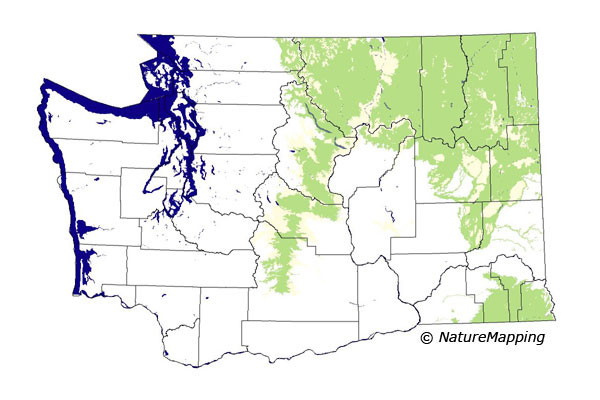 |
Metadata (Data about data or how the map was made)
Legend:
 = Core Habitat
= Core Habitat
 = Marginal Habitat
= Marginal Habitat
Predicted Distribution
Amphibians do not migrate as some birds and mammals, so the colored areas depict
the predicted range for the Spotted Frog (Eastside) year-round. The habitats
were identified using 1991 satellite imagery, other datasets and experts throughout
the state, as part of the Washington Gap Analysis Project.
Other
maps & Information:
|
Distribution and Habitat Requirements
The Columbia Spotted Frog is currently found in parts of the Cascades and in eastern and central Washington always in or near a perennial pond,
lake or sluggish stream.
Models
The Northwest, Northeast, East Central and Southeast Cascades, Columbia Basin, Okanogan Highlands, Northeast Corner and the Blue Mountains ecoregions
were selected. Through most of its range, all steppe zones except the Central Arid Steppe and forested zones below the Alpine/Parkland were core areas.
Alpine/Parkland and Central Arid Steppe were marginal. Also, since Columbia Spotted Frogs apparently do not go above the Grand Fir zone in the East-central
and Southeast Cascades regions, the Grand Fir zone in these regions was marginal and higher zones were excluded.
Lakes and rivers were good habitats. All grasslands, shrub savannas, shrublands, tree savannas, open and closed-canopy hardwood, hardwood/conifer and
conifer forests of all age classes were considered suitable if appropriate microhabitats existed.
Translated from the Washington Gap Analysis Amphibians and Reptiles Volume by Karen Dvornich
Webpage designed by Dave Lester.